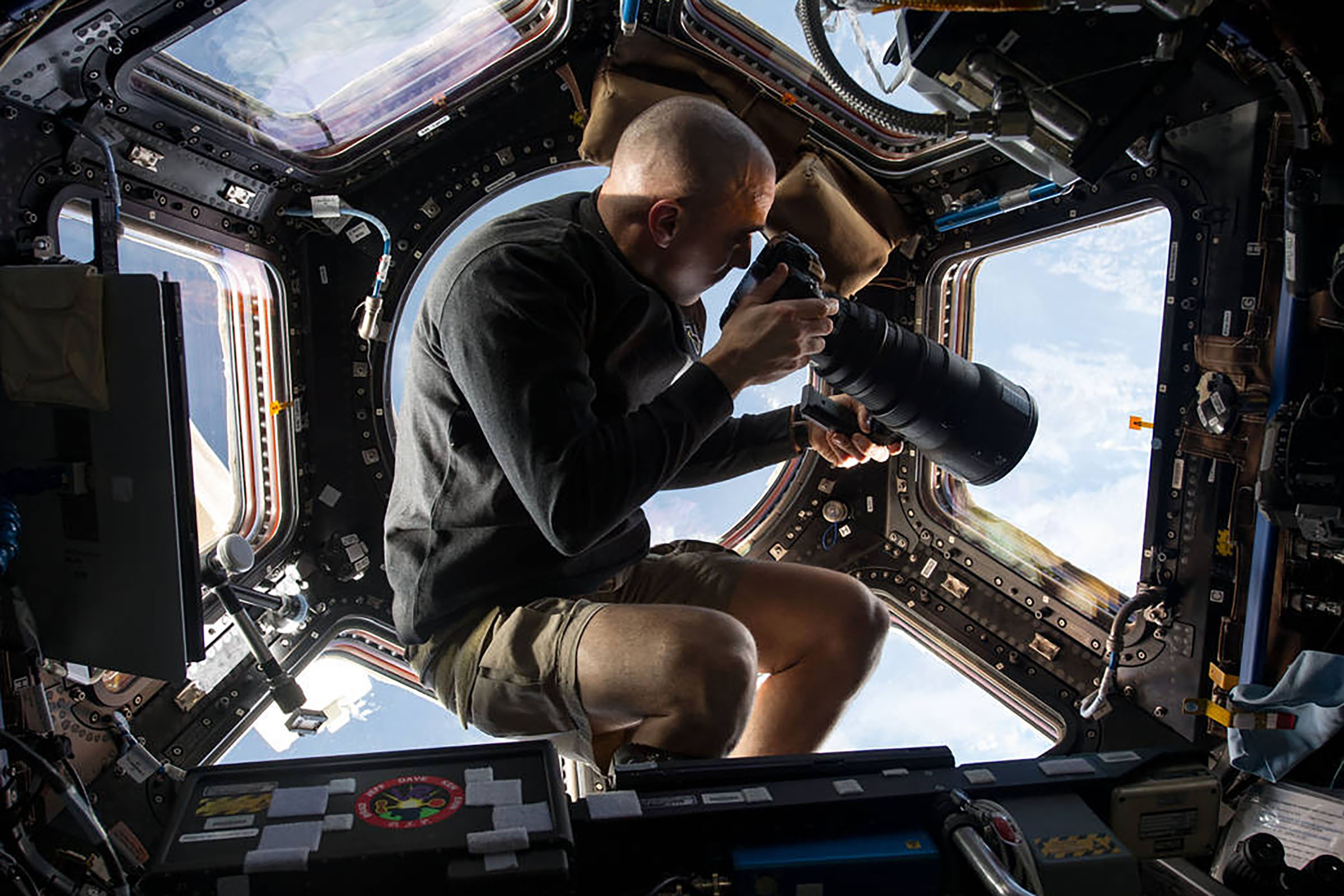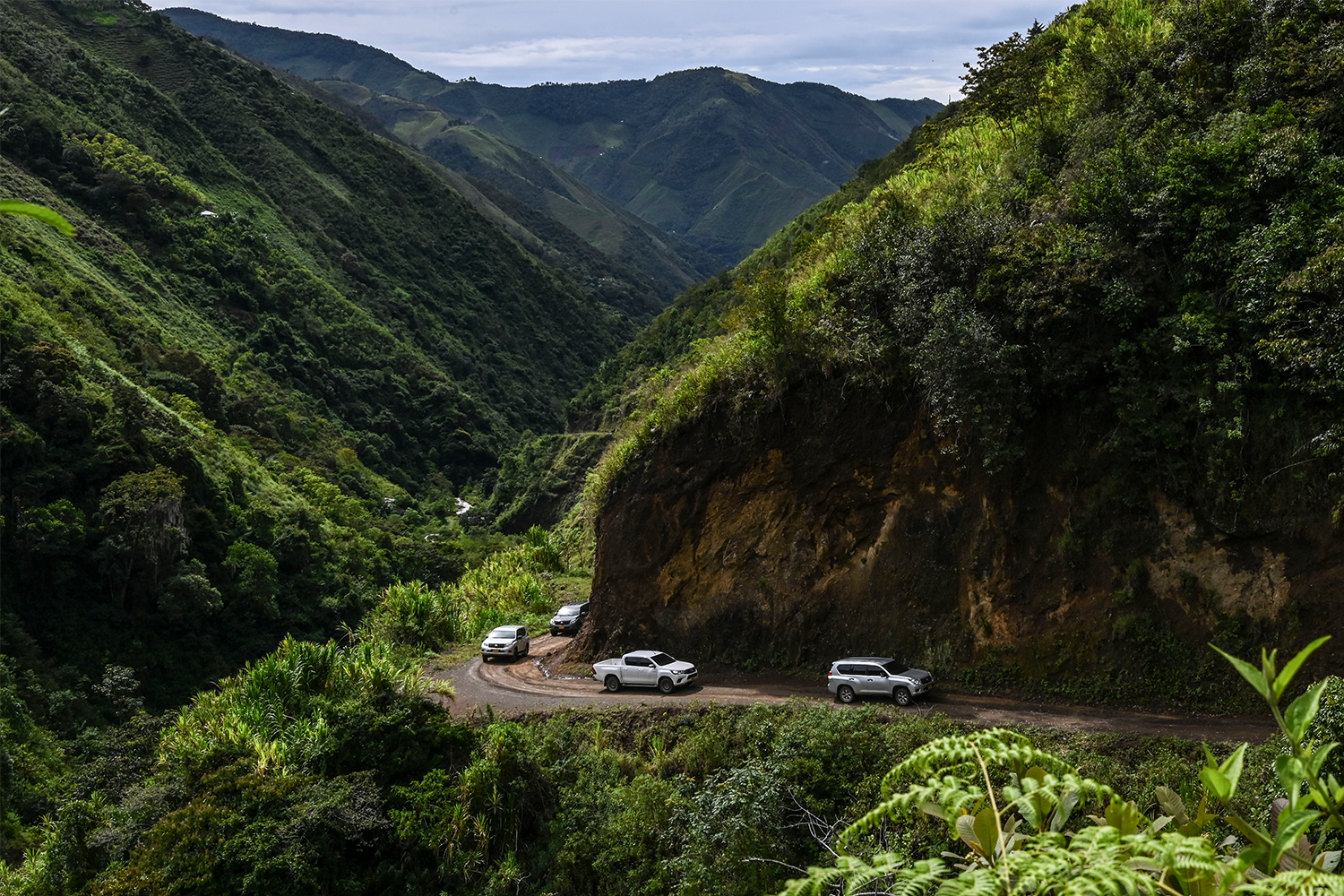Rick Stanton MBE is a British civilian widely regarded as “one of the most accomplished cave divers.” Cave diving is the activity of exploring flooded cave systems with scuba gear for recreation or scientific exploration. Every once in awhile, people are caught by rising water and the conditions can quickly become deadly. Stanton is on the short list of divers called when these situations happen, and has flown all over the world to carry out daring rescues.
One of those calls came in 2018 when a youth soccer team was trapped in the Tham Luang Nang Non cave in Chain Rai Province in Thailand. Stanton and his diving partner John Volanthen soon found themselves under a global spotlight with 13 lives hanging in the balance. His incredible journey to that stage is mapped in the documentary The Rescue as well as his new book Aquanaut. Below, the retired firefighter shares the story of first finding the team; it appears as told to Charles Thorp, and has been edited and condensed for clarity.
I was 18 years old when I first saw cave diving, in a documentary called The Underground Eiger. I had always been drawn to the water as a kid, and this seemed to be a way to bring technicality and purpose to the sport of diving. Going down into the depths to navigate routes that could not be retraced or had never been attempted before. For me, it seemed like a perfect form of exploration.
My first cave dive, or what we call a fresher’s trip, was while I was at university. I had built it up so much in my head, and prepared for it, that I couldn’t help but be a little underwhelmed. I was worried that I would end up being the bored every time, but it turned out all I needed was a more challenging dive. I spent years chasing the most difficult dives that I could find and pushing my boundaries.
I developed my skills over the years both individually and with a team of guys who had the same passion. Eventually we were going further than anyone else with little to no preparation. We are able to do this not just because of our diving skills better than anyone else’s but because of our intimate knowledge of caves and how caves work. Our reputation started to grow in the community, with all the landmark dives that we were doing.
Our first rescue call came back in 2004, when we were called into an incident where six British soldiers were trapped in a cave in Mexico. There still hasn’t been a confirmation on exactly what they were doing there, it could have been a training exercise. These guys were experienced cavers, but you learn these situations can happen to anyone. Even though they were military men, they were still very stressed in the situation. But we were able to get them out, and that began our work doing rescues.
Not every mission that I have been brought in on ended happily. Caves are formed in large part because of water flow, they often have rivers in them, and fast changes in water elevation can catch even experienced divers by surprise. When people are trapped underwater in a cave, there are also a good deal of situations where the ending is not very happy. That is when a rescue attempt sadly transitions into being a body recovery.
Being a part of as many operations as we have, there is a responsibility we feel when these disasters happen. That is how I and my diving partner John Volanthen felt when we heard about the team of young soccer players trapped in Thailand. We were so sure that we could play a part in saving these kids, that we reached out to the British government to contact the Thai government on our behalf. At the same time, Vernon Unsworth, who was one of the early divers onsite, put our names forward because he was aware of our reputation. The messages overlapped and they ultimately decided to bring us in.
Six hours later we were on a plane to Thailand. The rain was still pouring down when we arrived. They drove us to the site, where they gave us a shack to sleep in with one double bed and one single bed. One of the guys who was with us, an older gent named Robert Harper, put his bags on the single bed, which left John and myself to share. That was a smart move on his part. The rain continued straight into the next day, which was very foreboding considering the circumstances.
The base of operations was complete chaos. Cameras were being shoved into our faces as soon as we got there, which we did our best to ignore. So many people were trying to help, hoping to volunteer with the effort, but there was no infrastructure to maintain it all. The families were there the whole time, and I made a conscious effort not to look them in the eye, but I couldn’t help but know that they were there. I was there for a specific task and needed to be able to focus. I have learned to put blinders on when I need to. And of course there was also a serious military presence.
The Thai Navy SEALs weren’t too excited to see us in the beginning. They hadn’t had too much success with their initial attempts, and the idea of a few old men from England coming onto their turf to take over the rescue didn’t sit right with many of them. There was a language barrier that didn’t make anything easier, and they didn’t know about our previous successes. There was also a deployment of U.S. air force personnel from a special tactics squadron based in Japan. They were there as advisors to help the Thai military coordinate the rescue, and ended up being crucial to helping us it done.
The conditions in the cave only got worse though, with it raining nonstop there was just more flooding, forcing the teams farther and farther back. Our efforts had to start further back than the others, but all we could do is soldier forward. I had been caving in Thailand before, at one point as a civilian caving expert for a UK military caving expedition to explore another part of the country. But this was my first time diving this particular cave and the visibility was very poor.
Luckily, John and I are very used to diving in poor visibility. The first full day that we were in the country, we were the only ones diving into the cave. That very day we came across four workers who were trapped by the flooding waters. They had been resting in one of the alcoves and missed the evacuation. The authorities weren’t even aware that they had been missing at that point. They were at the third chamber, which was relatively close compared where the soccer team was.
The officials were telling us that the water was rising three feet every half an hour, which was pretty troubling for the rescue efforts. The land was going fast, so we elected to dive the four workers out. That moment was pretty crucial, because it gave us credibility with the people outside looking in that we were able to pull off rescues. Once the Thai Navy SEALs saw that we knew what we were doing, the working relationship between all of us was much better.
That was good, because the situation in the cave wasn’t getting any easier as we continued to push through the darkness. I could see a maximum of six inches in front of me. I guess you could say I haven’t technically seen the cave yet really. But I can tell you that it is not a labyrinth as some people describe, it is one twisting tunnel that is complicated a lot by erosional features. People would find it very hard to believe that we would actually make it through the cave system in pitch black. It isn’t as simple as feeling around, either, but you need to be bold in how you move.
That is where the experience comes in. I have learned how to feel the flow of water and navigate onward through the channel. The current was so strong that we had to stay on the floor, digging our hands into the dirt to pull ourselves forward. Our hands were cut up at the end of each day, and our fingers nails breaking, but we just kept going. The hope came when we discovered that there was more airspace in between the flooded sections than we had been led to believe.
That was the first moment that we had real hope, but it is not that we wouldn’t lose it again. The first morning, after we rescued those workers, the rainwater made it impossible to dive. The cave kept on flooding, keeping us out day after day. That negativity was only compounded by the fact that we weren’t sleeping or eating really well. I felt a lot of attrition on my end. There was a point that we believed that the level would not be going down at all, and that it might be time to start thinking about going home. That was a pretty dark moment.
I have to give credit to the Thai Navy SEALs. Even though they really didn’t know much about cave diving, they weren’t going to give up. They continued to try to push forward, even when it was unreasonable. They started that line-laying process, and once we saw that, we got back in there, took over for them and were able to use our experience to push the effort farther.
That is what we did, and eventually we made it to the boys. The dive took three hours of fighting against the current. We couldn’t believe it when we popped our heads up and saw them all gathered on the rock. There are millions of people who have seen that video clip from when we found them, and it is an incredible feel-good moment, but people have to keep in mind we didn’t know what we were going to find. The fact is we accepted the mission knowing there was a chance that we could be finding 13 lifeless bodies floating in the water when we reached them. So the shock and joy you hear is real.
There are a lot of people who think that it is my voice you first hear on the video from when we first found the kids, but it was actually John’s. I am in the background counting them down, until I finally say, “They are all alive!” Everyone of them was still walking and able to look us in our eyes. They were so placid and calm. Even when we were handing out food to them, they must have been staving, but they took it so peacefully.
The euphoria of that discovery left pretty quickly, because then it was about how we were going to get them out. That whole team became our responsibility in that moment, and we had no idea what we were going to do. The journey of getting them out of there was even more crazy than the road we took to finding them.
______________________________________________________________________________
This series is done in partnership with the Great Adventures podcast hosted by Charles Thorp. Check out new and past episodes on Apple, Spotify or wherever you get your podcasts from. Past guests include Bear Grylls, Andrew Zimmern, Chris Burkard, NASA astronauts, Navy SEALs and many others.
This article was featured in the InsideHook newsletter. Sign up now.





















